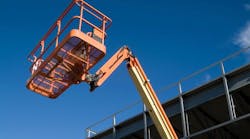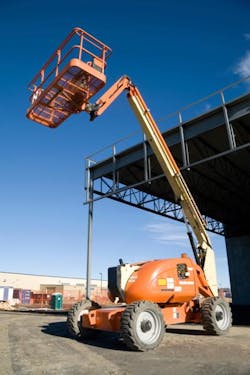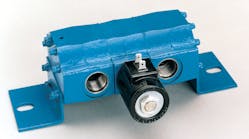For example: when the hydrostatic-driven vehicle corners, the outer wheel motor must rotate faster because it turns on a longer radius than the inner wheel. To do this, the outer wheel motor must receive greater flow. Otherwise, it is dragged through the corner by the inner wheel — causing skidding. The parallel circuit prevents skidding by directing adequate flow to each wheel while delivering constant power to the traction drive. The same hydraulic differential circuit also accommodates differences in tire diameter due to wear, uneven wheel loading, and differences in ground contour at the point of wheel contact.
However, in driving situations where one wheel loses traction — in mud, snow, or ice, or by bouncing off the ground — the differential circuit would allow full flow to the wheel with the least resistance, resulting in wheel slip. To avoid wheel slip, positive traction at all wheels is required. One way to accomplish this is to route pump flow through a flow divider and then to the wheels. By its nature, the flow divider ensures that each wheel receives equal flow and eliminates slip. But now the drive is subject to skid.
A hydrostatic drive can handle both slip and skid by using our gear-type flow divider with an integral, solenoid-actuated two-way valve incorporated between the output ports. Normally, this valve is in the position to provide the differential circuit that is required by most driving conditions. However, when wheel slip becomes a problem, the operator energizes the valve to divide flow for positive traction. The operator then switches back to differential for normal travel.
An alternative design substitutes an integral needle valve for the two-way valve. The needle valve’s orifice is preset for the type of terrain to be covered. The circuit then provides a compromise, constant-drive condition that is not full-differential nor full-positive traction. There always is enough flow to each branch to assure rotation of both wheels, while still allowing smooth cornering without skidding.
THIS INFORMATION was provided by Matt Christensen, of Concentric Rockford Inc. (formerly John S. Barnes Corp.), Rockford, Ill. For more information, call (815) 387-4617 or visit www.concentricab.com. See this product at IFPE 2014 Booth 80908.



